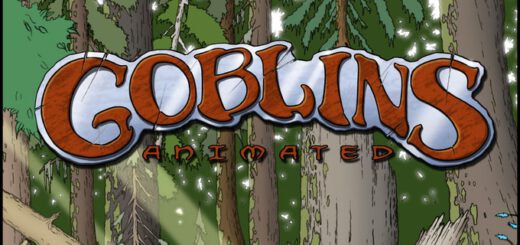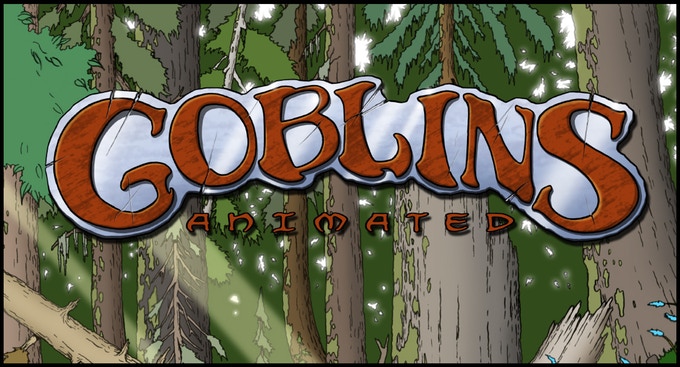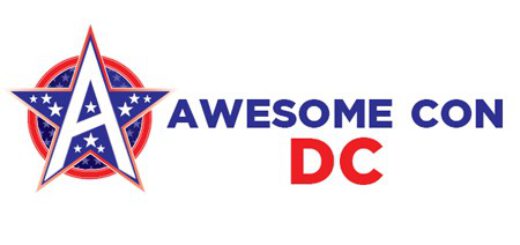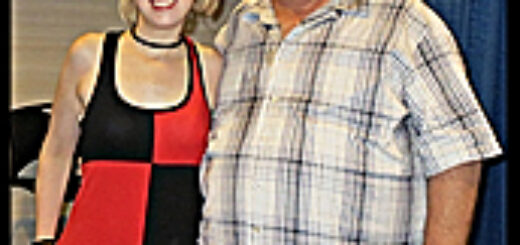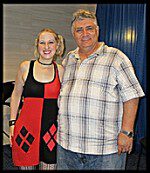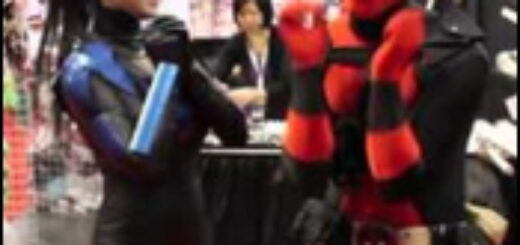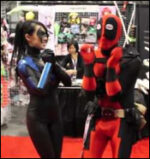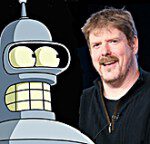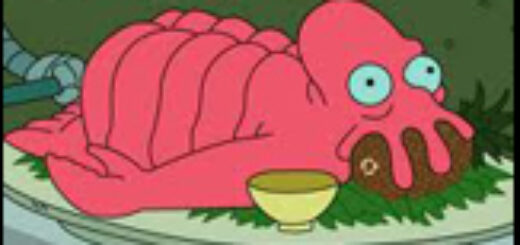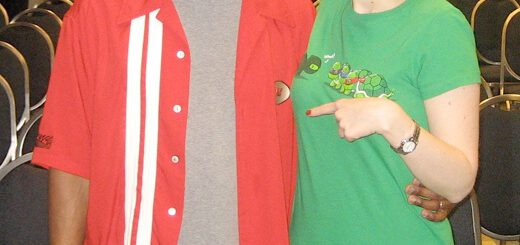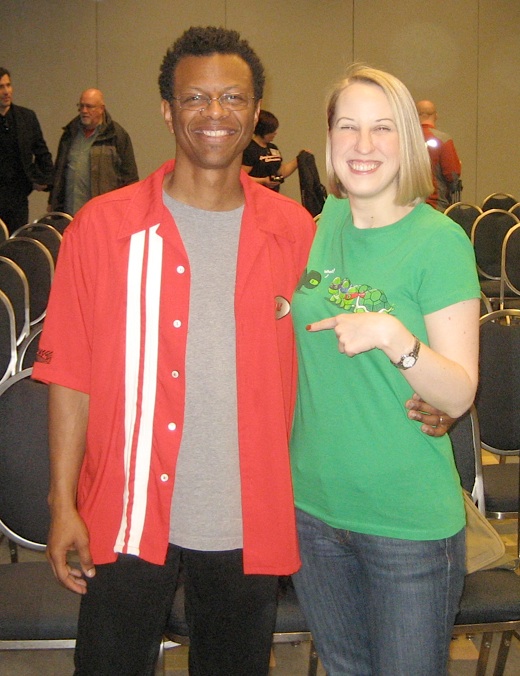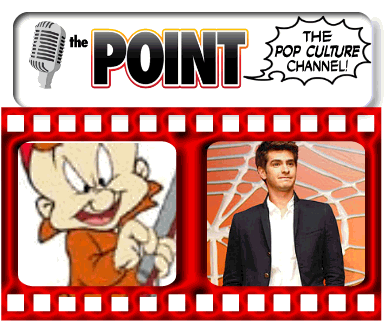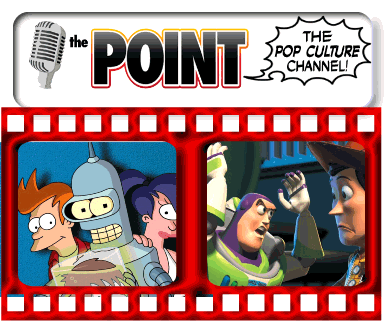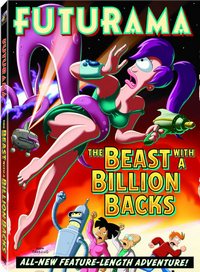Phil LaMarr talks Goblins Animated!
Hey friends, have you seen this?! It’s the Indiegogo for a project called Goblins Animated, and it looks completely awesome.
It first popped up in my Instagram feed as something connected to actor/voice actor Phil LaMarr, and that was enough to get me to check it out. As it turns out, Goblins Animated is to be a new animated series based on the decade-long run of the webcomic Goblins, by creator Tarol Hunt; and is the brainchild of Tarol, Phil, and Matt King. The animated show, like the comic before it, will be the story of a D & D realm told from the point of view of the little guys, the “monsters,” instead of the adventurers. It’s a heroic tale of a group normally considered evil and weak. “Think Smurfs meets Game of Thrones.” It’s planned to start with ten episodes, and will feature famed voice actors including Billy West, Maurice LaMarche, Jim Cummings, Tara Strong, Matthew Mercer, Jennifer Hale, and Steve Blum.
After checking out the Indiegogo, I hopped over to the comic to check out the source material. Even just a few strips in, I could tell that this is a very clever and fun comic – with the kind of layers of storytelling, character, humor, and social commentary that I love. Realizing that, I had to know more. So I sat down for a great chat with Phil himself, who shared a ton of details with me. The interview made me that much more sure that this project needs to be made!
Listen to the interview or read the transcript below, and you’ll see exactly what I mean!

Emily: Hi Phil! Today we are talking about Goblins Animated, which is a new Indiegogo* project that you are involved in. I saw it coming up and looked at it and I immediately wanted to talk to you. So this started as a comic, it’s been going for ten years, and now you are involved in a project to make it an animated show. How did that happen?
Phil: Well, let’s see. Tarol Hunt, the creator of the Goblins comic, lives up in Vancouver. He’s been doing the comic for a long time. He, years ago, became friends with Matt King. Matt is an actor, voice actor, director, and writer. He has a show called World of Steam that he created. And they share various geekeries, and got to know each other, and Matt and I know each other through acting circles. Matt had the idea of, “This comic is so good, it should be seen by more people, and in this way.” He mentioned it to Tarol, and Tarol was like, “Oh, I don’t know, I don’t know.” He mentioned it to me and I was like, “Yeah! That’s amazing.”
Because I’m an old D&D head, and so getting into the comic, I was like, “Oh my God, all those references, that takes me back.” And I immediately saw in the writing and all these characters, a chance to do something really cool and really different in animation. Because so much of animation is kids-oriented; which doesn’t mean that it’s bad. But a lot of it tends to be much of the same. Like anytime there’s a show that’s action-oriented with a small kid at the center, then you get five of them. Or if it’s kind of like, psychedelic, and, you know, little kids watch it and kids stoned in college watch it – four of those. And this was something that was really, really different from anything that’s on.
I mean, the characters look like cartoon characters. But the stories that Tarol’s been telling are so much deeper. But, there’s also this geek-nerd-D&D thing at the same time. So it’s funny, and heartfelt, and then sometimes, there’s just things from D&D like, “I attack with my +1 Broadsword!” In the game, you’re just talking it. But in the comic, you see it. And the idea of actually giving all of that bloody, violent, medieval action life and movement just jazzed me so much. So basically we’ve been working over the last…going on two years. And figuring out what we need to do.
The first thing we did was adapt those stories that Tarol has been telling in comics into animated scripts. Because there are certain things you can’t do, and certain things you need to change. His pacing is that he does a page a week. Every medium has its strengths and its weaknesses. You can’t just port something over. Sorry, Robert Rodriguez. Sin City…was fine. Not great. But that’s the thing. People say, “Oh my God, this comic book is so cinematic!” That doesn’t make it a movie. You have to take the essence of it, the core, the thing that makes it cool – don’t lose that – but then adapt it to the form. So we spent a lot of time doing that, working with Tarol and Matt and me, just putting together the script, figuring out how these characters work the same – what we have to hold on to – and what things we can change, to make it work, so they start moving.
E: Yeah! So you said you knew Matt and Tarol knew Matt. How did you find the comic – was it through Matt? And did he just say, “Hey, you have to read this thing?” And you just started reading it and fell in love? What happened there?
P: Yeah! Because when you go on and you see the newest page, and you’re like, “Oh my gosh!” And then you go into the archive, and…basically, I just sat down and read the whole ten years at once. Wow…I guess I was going to say I had never binged a comic before, but I guess that’s what trade paperbacks are, aren’t they?
E: Yeah, I mean that’s pretty much why I like trade paperbacks, is because you can read more story at once. I love that we are both full-on comics geeks, because I know we’ve talked about this before, and I’ve done the same thing with webcomics and trade paperbacks. You’re like, “Where’s the other ones? So actually, I saw this project because you mentioned it at some point on social media, and I thought, “That looks interesting,” and then I went back and went, “I want to support it, where’s the Indiegogo?” And now the Indiegogo has launched, which we’ll talk about. But I started reading through the first ones, in Book I.
P: You went back to the first stuff? That’s so funny.
E: Yep, all the way to the beginning, to see what it was like, and I read about a third of Book I, because unfortunately I didn’t have time to read the whole ten years before we talked, because it’s a lot! And I want to enjoy it, I don’t want to just skip through it! But then I went to Book III, and Book V, just to see how it changes. Because Tarol put up that thing in the beginning that says, “Hey, my art has changed.” And of course that happens; so I was wondering what the characters look like now, because that might be more like what we’ll see in the animation. And the comic looks so clever, even in the beginning. I could see why it appealed to you, and I could see why it would appeal to me as well, and why when I saw a little bit on social media I thought, “That sounds like something I would like to support.” So when you first started reading the comic, was there a particular aspect that drew you, or was it the whole package? Did you like the humor, or the D&D, or the characters, or what really grabbed you the most?
P: It was the fact that he was doing all of those things at once. To me, especially in animation, it’s so rare. Futurama is one of the few shows that has real humor, and real heart. And the fact that Tarol was doing jokes, really funny stuff, but even back in the beginning, he was also doing, like, “Why do these adventurers come after us?” “Because they think we’re less than them.” Like, metaphors for racial oppression. And then – silly jokes!
E: Yes! And all the weird names of the goblins, that are very clever and fun and interesting, but also kinda cute. I love that the fortune-teller (spoiler alert?) calls herself Young-and-Beautiful, and she’s old, and weird-looking, all lopsided. Because the fortune-teller names all of them, so she gets to call herself something nice!
P: Right! Exactly! And Can’t-Think-of-a-Name-Cause-He-Looks-Like-a-Regular-Guy – that’s his name.
E: Yes – and he has that look! Even in the early art, he’s got that little *ting* smile going on. I thought all that was really clever. You talked about how there are layers to it, about classism, and racism, and commentary on those things. I wondered what audience you are aiming for and how you’re going to fold in the different layers through the animation? Are you having to adapt things from the comic in that way as well to make it fly in an animated format?
P: Now that’s one of the issues. And it’s basically the biggest reason that we’re doing this as a Indiegogo. Because Tarol’s got the designs, he’s got the premise. We could have taken this and tried to sell it to studios or networks. We talked to some people – and of course one of the early notes we got was, “What if there’s one character who doesn’t ‘get’ the whole D&D thing, so we can explain it to the audience that way?” And we’re like, “Uh-uh.”
E: Oh, right. They wanted an exposition backstory guy.
P: Yeah, and the truth of the matter is, we want to tell this story this way. We don’t want to have to water it down, or take out some of the layers. It’s like, “Well, we can’t really do that social commentary stuff. Kids won’t get it.” I believe that audiences now, for animation, are much more sophisticated than most studios, producers, and major media entities give them credit for. Because more people can do more kinds of things now, you see such an amazing range. And you do see a lot more adult-oriented animation. And by that, I don’t mean, you know – topless. I mean sophisticated, and layered. Like, our last season of Samurai Jack – we couldn’t do that back in the early 2000s.
E: I’m always a proponent of not talking down to the viewer or the reader; if it’s the story you want to tell, then someone out there is going to want to hear it. So I love that you’re trying to translate this in a way that doesn’t lose that, and crowdfunding is maybe the best means for that because you don’t want the meddling.
P: We want to maintain control and be able to hold on to what makes this comic so special. Always there’s the danger, when you broaden an audience, of “Will some people get it?” But to me, that’s the wonder of having something that works on a number of levels. If somebody just wants the D&D references, they’ve got that. If somebody loves the action sequences, they’ve got that. If they never get the social commentary that’s underneath – fine.
E: Maybe they’re still enjoying it for other reasons. Or it’s not their thing – that happens too. But I always like the idea of aiming high, because then you’ll hit more layers. That sounds really exciting. So you’ve got all this source material to work with, and you’re just starting out; so is there an overarching plan? Are you taking it from the very beginning, and going from there to make it an ongoing story?
P: Well, that’s our one sop to broadening the audience. We can’t plop people down in the middle. Especially because the storytelling is layered and relatively complex. So we go to the beginning of the premise – how do these goblins become the adventuring party? That’s the first story arc. Because the thing is, all of the characters are already there fully formed. Warriors, the goblins – this whole story arc basically builds the overarching premise of – the humans are not the heroes, necessarily. The goblins are. And that’s the twist. And that’s also what I think a lot of D&D people respond to is, “Oh, yeah, that’s so funny!” Because it’s a twist on what we all grew up with, know, and play every Thursday. So that you don’t want to lose.
But it also makes it a nice entry point into the world. I think as it goes on we’ll definitely have more opportunities. Because Tarol is like, “I did that ten years ago. I wasn’t as good as I am now. Can we not do that thing I did?” And there are things where he’s like, “I shouldn’t have done that. Let’s change this.” And we’re like, “Oh, but we love that!” We sometimes go back and forth that way. But it remains to be seen how we will build the story. In terms of: will we pull some things that he got to later, earlier. The three of us will work on that. Because again, you don’t want to lose anything. But you also want to take advantage of whatever opportunities the new format offers you. Like, “Well, I did a whole section where they’re just walking through the woods for three weeks.” “Yeah, man, we’re going to skip that one.”
E: Yeah, you’ve got to condense that down somehow!
P: Yeah, not the best thing to animate.
E: Well, technically, that would be easy to animate. But not the most exciting.
P: Actually, what we’ve found is less that, than more that we’re finding ourselves digging into moments, and expanding them. Because the things that take time on a panel, you can dig into, and blow up. Like, “No no, this is a whole scene now!” You go back and forth. In this medium, we can do this with it, that you couldn’t do before – like 360 degrees!
E: So it is becoming its own entity in a different way. Now, you already have listed excellent voice talents. Some are familiar from Futurama or other animation. So far we’ve got Billy West, Maurice LaMarche, Jim Cummings, Steve Blum; and I’m not as familiar with Matt Mercer in the voice sense, but he also is one of the masterminds behind Geek & Sundry’s Critical Role, which of course has some relevance here. So – is he working in other aspects besides voice because of his unique experience there; and also, how did you get this amazing cast together?
P: Uh: we called them. Because they’re all people that we’re friends with. And as a performer, going into the writing and producing part, most of it is a headache. Because all of a sudden you have to worry about all of those other parts of the pipeline that as an actor you never have to worry about. The best thing of all is that you can hire your friends.
E: Hah! That’s why I want to do animation someday. Just so I can hire all of you guys to be the characters.
P: Hey, it could happen! But the best thing is – we know so many amazingly talented people. And it’s funny, because Matt does have huge D&D cred; and before we announced anything to do with Goblins, Matt called me up to do a Critical Role offshoot. Like, we did a streaming day of the gameplay – and it was an all-goblins adventure. And he had no idea we were working on this. So we – me, Ashly Burch, Marisha Ray, Ivan Van Norman, and Taliesin Jaffe – all played a group of goblins on a quest. It was hilarious, because it’s the same thing we get to in the comic. They all picked warrior classes, and we played it, just like they were humans. But of course, they acted like goblins. It was fuuun.
E: So bringing everyone in, did they say yes sight unseen, or what have their reactions been to seeing the project, or the comic, or whatever you gave them to look at?
P: It was interesting. We gave everyone pictures of the comics so they would know what their characters were. And it really made me feel good – a couple of people did, sight unseen, say yes. It was like, “Well, I’ll send you the email,” and they were like, “Doesn’t matter. Where do you want me to be?” It’s so great. Because these are people with such enormous talents. And for them to offer their abilities; it’s like Michael Jordan saying, “Sure! I’ll come over and shoot some baskets with you. You just say when!”
E: That’s awesome. But I’m sure they also trust you not to lead them down the path of a project that’s going to fall on its face. So when they did see some of the materials, what did they say?
P: It’s funny, because none of the guys except for Matt knew about it. They were like, “Wow. What’s this? Okay!” Because, you know, Billy and Maurice aren’t D&D players. But they love characters! And everybody was so gung-ho to dig in – “Okay! Who’s my guy? What are we doing?” And we only had a little bit, because we got everybody together to record an animatic – a proof of concept test thing with some temporary animation – just so we could see the voices come out of these characters. And we’ve got that featured on our website – GoblinsComic.org. I don’t think anyone has actually read the whole ten-episode arc that we’ve written so far. But everybody has been given full information about their individual characters, and yeah – people dig it! I mean – I’m not sure if anyone is going to jump out and join a Pathfinder game anytime soon…but everybody’s really enjoying the complexity of it. Like, “Oh! This is not Clifford the Big Red Dog. Cool!”
E: So I’m familiar with the voice casting where you go in, and you’re given the character, and you do a bunch of voices, and then they decide whether you’re the person who’s going to do it. Obviously this is a different process. Did you choose characters ahead of time and give them to specific people and say, “Come up with your voices”? Or did you give them choices and they worked on it? What happened there?
P: Again – when you’re working with Billy West, Maurice LaMarche, Steve Blum, Matt Mercer, Jim Cummings – they can do anything. So “auditioning” isn’t really auditioning. And having worked with these people for decades, I know what their strengths are, I know what they like, and also what they don’t normally get a chance to do. Because you don’t always want to be doing the same thing. We’ve got Billy playing MinMax. And MinMax is this big, really dumb warrior. But you know, Billy has done Fry. So he’s not going to make him like Fry. So it was great to sit down with Billy and find a new place where this character would live for him. And that was the amazing thing. I’ve been on their side of the glass; but to be on the other side of the glass and just watch them do what they do, so effortlessly, for you, like: wow. I get why these guys work all the time, forever and ever. Because it’s a joy – you work so hard on something, you hand it to them, and they breathe life into it.
E: I love every time I get to see you all do that sort of thing. It’s one of my joys in life. Because it’s so magical to me; because I can’t do it! And you guys are so good at it! But having that different experience – and obviously, this is still somewhat nascent – but has it given you any taste for wanting to do more of this side of things, or thinking, “Oh, I really like this and I didn’t know”?
P: It’s given me an appreciation for it. I realize it’s a lot harder than I thought. The first time we recorded somebody, I was like, “Oh my God, that was perfect! You were great! See you later!” And then you’re like, “Oh wait. They usually get three takes. And then you go back over it and it’s like, “Ohh, there’s a lip smack right in the middle of the one we liked, aack! That’s why we do it over and over again.” And you realize not everybody can direct. Thankfully, as far as the writing, we’ve got Tarol’s stuff to work from, and all three of our brains working together – and we’re all relatively experienced with writing over the years. But yeah, there’s a lot of new territory, in terms of animation producing. And you look at the lists of jobs required for animation, and you’re like, “Timing spinner? What does that even mean?”
E: Like, “Who are these people?”
P: “And why do they get paid fifty-five hundred dollars? What? Huh??” But it is so intricate and so complicated and requires so many moving parts that I don’t know how a cartoon ever gets made!
E: It’s a big process! But it sounds like you’re learning a lot, and – it’s good to stretch your wings.
P: Yeah, and especially personally – I’ve been doing this for thirty-plus years, and it’s rare that you find things that are new. I rarely find myself doing things I’ve never done before these days. Although I have to say, the biggest lesson I’ve learned from this is that animation is so much more expensive than anybody would ever believe. Because you see movies like Avengers, that are $200 million dollars – and yeah, because look at that Iron Man armor. But especially nowadays, when people are shooting movies on their iPhones – the range in live action is crazy. You can make something for a thousand dollars or $300 million dollars.
Animation? It only goes so low. Because there are so many parts, pieces, and people involved. It only gets so cheap. And that’s if you’re doing stuff that looks crappy. If you want to do something that looks good? That’s another reason we’re crowdfunding. That’s one of our biggest challenges, is that it’s a big ask. It’s almost 500 thousand dollars. Because you’ve got to design all the characters, draw all the characters. And people might say, “You’ve already got all the drawings.” But comic book drawings are not the same as animation drawings. And you can’t just make the comic into a cartoon.
E: Well, and your comic book artist can not necessarily do the animation. You may need a number of animators who have experience at that. And that’s a great way to talk a little more about the crowdfunding. By this point in life, most people are familiar with crowdfunding sites. You put in your pledge for X amount of money, you get a promise of prizes back, and if the project reaches its goal, you get your prizes, and the cool project gets made. Here, you’ve mentioned what you’re asking for and what it’s going to be put towards. How did you decide on cool prizes, and what do you think people will be most interested in?
P: A lot of it was just drawn from what we’re working with. It’s goblins, and it’s D&D, and things that fans would love. Tarol’s got some great character designs, so it would be silly not to offer things with those characters on them. So we’ve got posters, t-shirts. He’s got one character, a goblin paladin, who gets a magic axe, the Axe of Prissan; which is this amazing weapon that is actually holding a demon. And one of the really up-there prize levels is an actual Axe of Prissan. Because there’s this guy, Tony Swatton, who does the most amazing armor and weaponry – he makes real swords. And he is going to, based on Tarol’s designs, make a real-world Axe of Prissan.
E: I suddenly wish I had a lot more money. That would be great to hang on your wall Although you probably couldn’t take it to a comic-con anymore…!
P: Hah! Just put one of those colored ties around it, right?
E: Right? So obviously, there are levels…
P: Yeah, and all of our prizes have been drawn from what we have to offer. So there’s the goblin character design stuff – we have some plushies based on the characters.
E: Oh good! I bet I can afford a plushie!
P: Right. And because we have such amazing people involved, the funny thing is we haven’t announced everybody yet. Because we just set out a quest – if we reach 1,000 Facebook likes on our Goblins Animated page, then we’ll announce our next cast member. But there are some people that are so good, and they’re just going to blow your mind. And we’re going to get posters and scripts signed by the cast. Those are going to be prizes. Voicemails…because, “You know, we’ve got these voices.” On one of the prize levels I’m offering voiceover workshop sessions. So many people ask about it, and here’s a chance to invest in it, if this is something you really want to do, I’m offering up my experience, and my skill as an incentive – help us do this, and I’ll help you build your career.
E: And that’s no small thing! You have a lot of experience to draw on. I was privileged to observe one of Rob Paulsen’s teaching sessions, and it was a different experience than any I’ve had with Rob before, because you see how people are actually doing their job and working. It was fascinating and amazing to me, and I could see the people taking part learning. So that is a great prize for whoever is thirsting to be in the voice acting industry.
This is a lot of really great news. You did mention that along with the announced cast there are a number of other people coming in. For starting the story, how many characters and actors have you got? Are actors doing several voices?
P: It actually depends on how much we get funded for. We have plans through at least the first story arc, and we’ve got some plans for actually beyond that. We don’t know if we’ll get there right now. But we don’t want to be caught unawares. So we’re thinking way ahead. And yeah, some people are double-cast, in bigger roles, smaller roles – because, again, they can. These actors and actresses that we’ve got are so incredibly talented.
E: Well, you’ve got Winnie-the-Pooh and Tigger too! Among many others.
P: And it’s funny, because there’s been this competing impulse. One, I want to get everybody that I know and love and have worked with for many years in to do something on this; but at the same time, any one of them could basically do all of the characters! So at one point, you’ve got Jim doing several voices, and then it’s like, “Oh wait. He doesn’t have to do all of them. Let’s get so-and-so to do that!”
E: Well the nice thing is that if it keeps going you can bring in more people over time.
P: That’s the dream is that we get the budget to be able to flesh this out as completely and fully as possible. Because in animation, you get “three voices for a dollar!” But because it’s so expensive, you have to take advantage of that. But how amazing would it be if we could get all of these characters with different people. Although the funny thing is, like with Billy, every voice is an entirely different character anyway.
E: It’s true! I’m looking forward to seeing what he and the others come up with. Every time I hear new voices from all of y’all I’m like, “Where did that come from? That’s great.” By now I can sort of recognize some people, occasionally, but to this day if I hear Zoidberg and Fry and the Professor, I’m still going, “What? This is all the same guy?” Obviously you’ve got Hermes and Green Lantern, and Baxter Stockman, and there’s some different stuff going on.
I hope you get funded. This project caught my attention not just because of you but because it just looks really cool, and I think it probably will appeal to a lot of people. Is there anything else we should know about it?
P: Well it’s basically: we’ve got the Goblins comic, that we’re making this animated version of – and it’s funny, because Tarol described it to somebody the other day as, “Smurfs meets Game of Thrones.” Which is so apropos, because it gets the funny, it gets the cute, it gets the bloody. And we’ve got incredibly amazing, talented people involved with this and supporting us.
And basically, now we’re at the challenge point. We’ve got all the pieces, and we just need to get the word out as far and as wide as possible, because this is a big mountain to climb. What we’re trying to do is a huge undertaking, and we need people’s help.
E: Well I will spread the word. I couldn’t imagine a better team for such a project, which grabbed my attention. Thank you for giving us your time to tell us more about this amazing project. I hope it gets made and reaches all of its goals!
—
The Goblins Animated Indiegogo is live now through December 21, and could definitely still use your dollars to reach its goals. It’s got really cool prizes; and the more money we contribute, the more awesome they’ll be able to make the project, as Phil explained above.
So head on over and see which nifty supporter package catches your eye; and until next time, Servo Lectio!
FN: Goblins Animated was originally set to run on Kickstarter, so the audio interview references Kickstarter. However, it then found its home on Indiegogo, so that is where you should go to support it!

